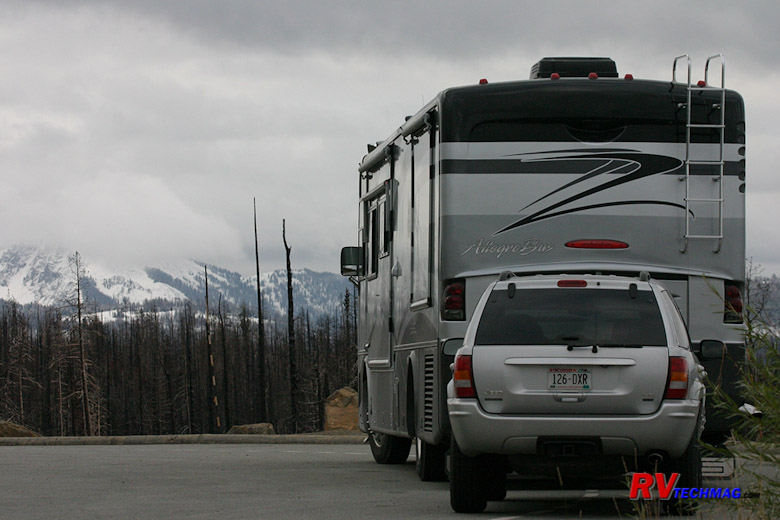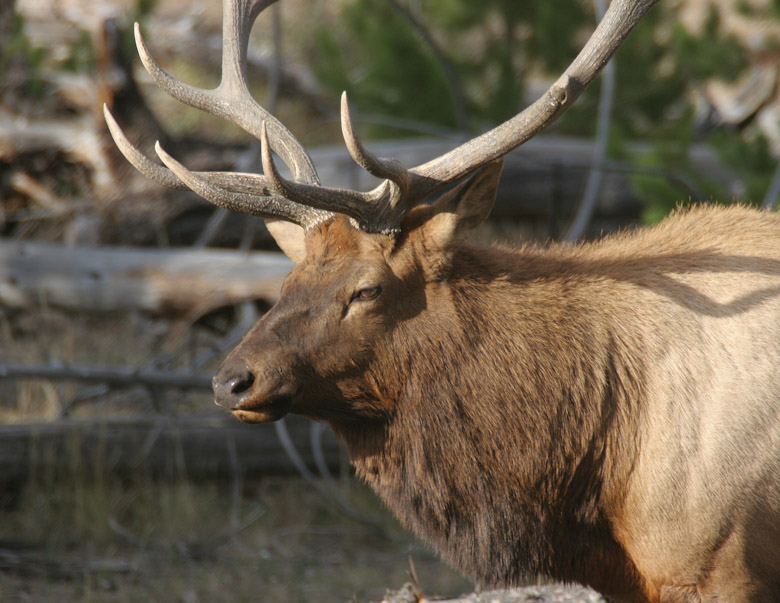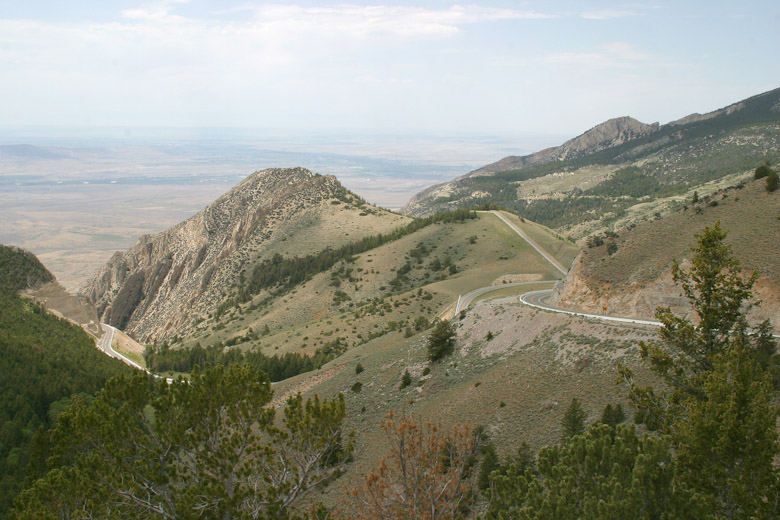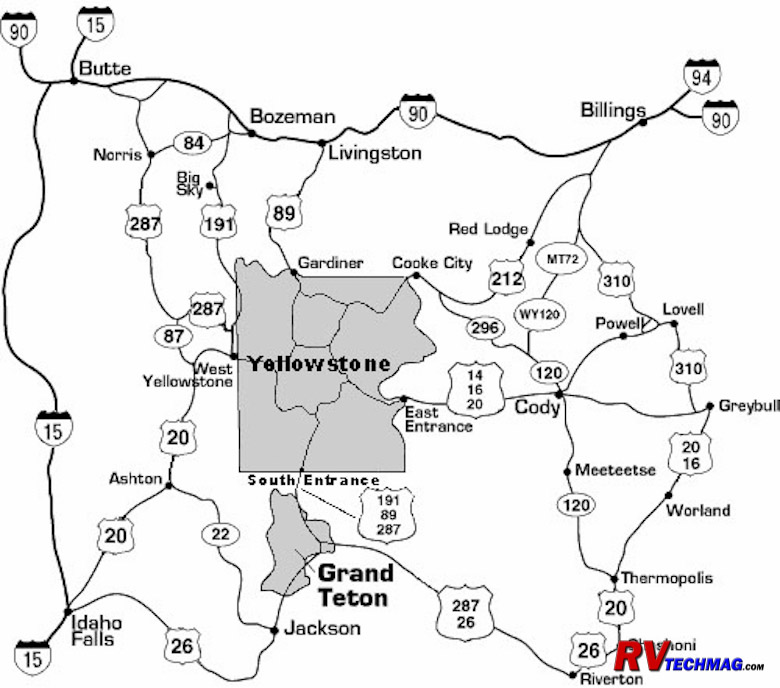Exploring Yellowstone by RV
Navigating Your RV Safely Inside America's Oldest National Park
Article Date: May, 2011
Article and Photography by Mark Quasius

Yellowstone is America's first national park. It's large enough that it's actually found in three state - Idaho,
Montana, and Wyoming. This expansive area is surrounded by mountains and many RVers are not quite sure about how safe travel is in these
areas. Couple that with the fact that travelers approaching from the east also have to content with the Bighorn Mountains and you have
some real questions about just where to drive and still be safe.
We've been traveling to Yellowstone in various vehicles over the last 25 years and have made countless trips to
this area in a number of different sized RVs as well as SUVs. I'll offer up some advice here based on my insight into the various routes
that we've experienced. This information will not be geared to travelers in passenger cars or other lighter vehicles because there's
really no limits as to which roads they can take. Instead, I'll gear this information towards RVers driving large motorhomes because
that's where the unique personalities of the various routes come into play and have some serious affect.
The Park
Mention Yellowstone and the first thoughts that come to mind are bears and Old Faithful. While Old Faithful is
certainly the most popular attraction in Yellowstone, it's merely one element of a huge thermal area. In fact, one fourth of the world's
geysers are found in Yellowstone. But, the park is much more than geysers, hot springs, and boiling mud pots. Yellowstone Lake is the
largest mountain lake in the United States.
Snow runoff feeds the lake and a number of streams and rivers, which flow into the lower areas. These valleys are
host to a plethora of fauna, including bison, elk, grizzly bears, bighorn sheep, and more than 100 different species of birds. Anyone
who has stood at the brink of the Yellowstone River's 308-foot-tall Lower Falls will never forget the view down the Grand Canyon
of the Yellowstone.
|

Bull elk can be found in a number of areas. The fall rut is the best time to see them as they gather harems and spar with other males.
|

The elevation gain encountered in the mountains approaching Yellowstone.
|
How Big Is It?
Yellowstone encompasses more than 2.2-million acres. Mostly in Wyoming, it overflows into Montana and Idaho.
In 1891, the Army Corps of Engineers constructed Yellowstone's roads in a figure-eight pattern. Today's roads basically follow those
same routes and are known as the Grand Loop, which is 154 miles long.
Mention Yellowstone and the first thoughts that come to mind are bears and Old Faithful. While Old Faithful is
certainly the most popular attraction in Yellowstone, it's merely one element of a huge thermal area. In fact, one fourth of the world's
geysers are found in Yellowstone. But, the park is much more than geysers, hot springs, and boiling mud pots. Yellowstone Lake is the
largest mountain lake in the United States.
Five Entrances
Yellowstone has 5 entrances and can be approached from virtually any direction. In addition, there are three routes over
the Bighorn Mountains that need to be fully appreciated before an RVer makes his choice as to which one to take. I'll give my perspective on
all of these routes and attempt to illustrate with pictures whenever possible. Hopefully this will give you some good information to help you
plan your trip. The main thing to remember is that Yellowstone is spectacular! There is no reason for any RVer to avoid going there. If you plan
your route accordingly you'll find this to be one of the greatest RV trips you've ever taken. Hopefully this web page will help you make the
decisions that will lead to an enjoyable time for all.

Yellowstone's roads are laid out in a figure-eight loop design. Five spurs connect the Grand Loop with the gateway communities.
Yellowstone is basically a large squarish shaped park with a total of five entrance gates, one on each edge of the park
plus one coming in at the northeast corner. These spur roads allow visitor access from virtually any direction. But, each entrance has a totally
different character than the others because of it's unique geography at that edge of the park. Some routes are very scenic but have lots of
steep grades and curves while some are fairly flat and just plain boring. Furthermore, once you're in Yellowstone there are a number of key
areas to see and places to base camp from. Each has a unique ambiance in it's own so that further affects your decision on which route to
take. The interior roads have undergone extensive remodeling in recent years, making them more RV friendly. Following is a description of
each particular entrance.
Return to Home Page
If you enjoyed this article be sure to recommend RVtechMag.com to your friends, like us on Facebook or Twitter
or subscribe to our RSS feed.



|








